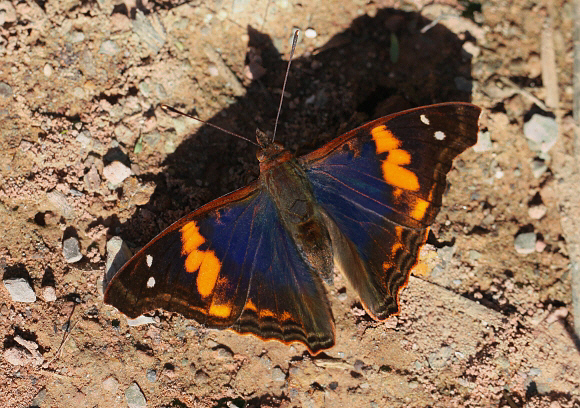
Introduction
The genus Doxocopa comprises of 15 species found variously from Mexico to Bolivia and Paraguay. The butterflies are closely related to the Apatura Purple Emperors of Europe and temperate Asia, and have similar habits.
Males of this medium sized insect reflect a purple sheen from the upperside wings, but this tends to be of a less intense hue than in most other Doxocopa species, and is only visible when the sunlight reflects at particular angles from the surface of the wings. Females lack the iridescence, and have broader orange bands on the forewings.
Doxocopa elis is found on the eastern slopes of the Andes, from Colombia to Bolivia.
Habitats
The butterfly breeds in rainforest habitats at altitudes from 0-800m.
Lifecycle
The caterpillar feeds on Celtis species ( Ulmaceae ). When fully grown it is green, strongly tapered towards the anal segment, and has a pair of forward-projecting horns on its head.
The pupa is probably similar to that of other Apaturines, which are typically flattened laterally, arched dorsally, and superbly camouflaged as living or dead foliage.
Adult behaviour
Males are scarcer than agathina, cyane and pavon, but can sometimes be seen basking on bare ground, where they settle to imbibe mineralised moisture. They extract sodium and other minerals from the moisture, chemically convert it, and pass it to females during copulation.
Females do not imbibe minerals. They are not known to visit flowers. It is possible that they obtain their sustenance entirely from chemicals passed to them via the spermatophore by males. They may however also obtain nutrients from aphid secretions on tree foliage, or from sap oozing from damaged tree trunks.
